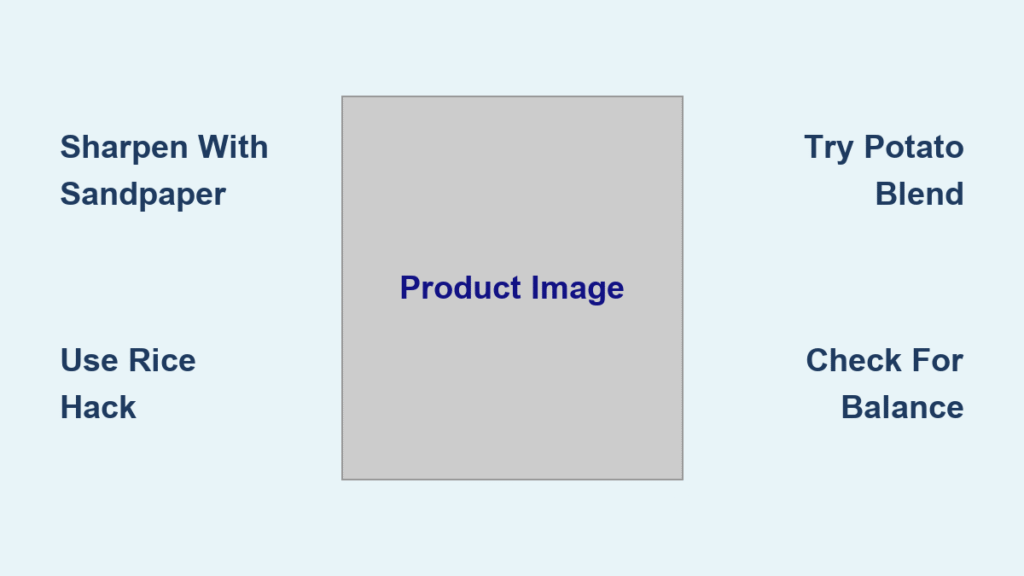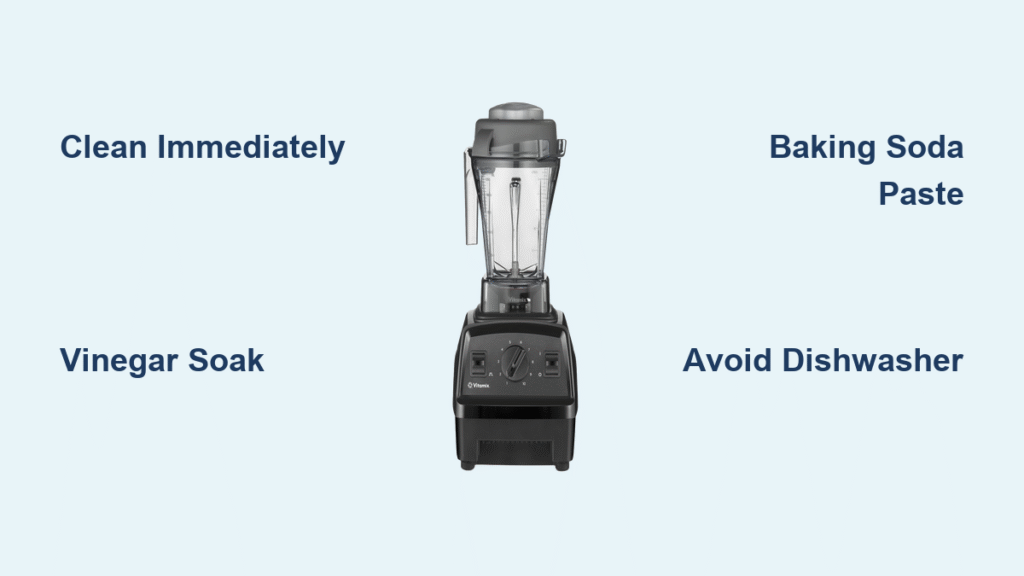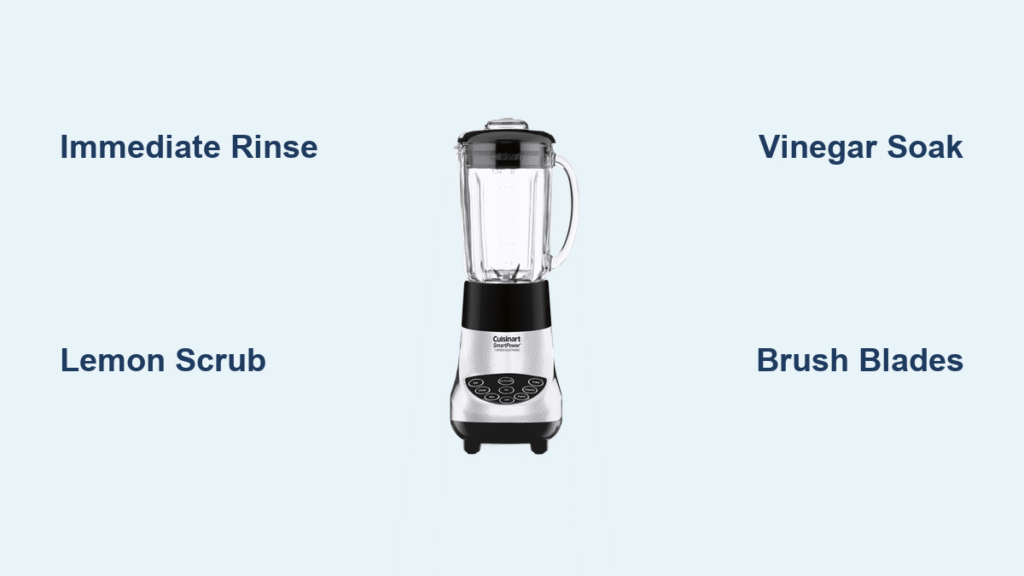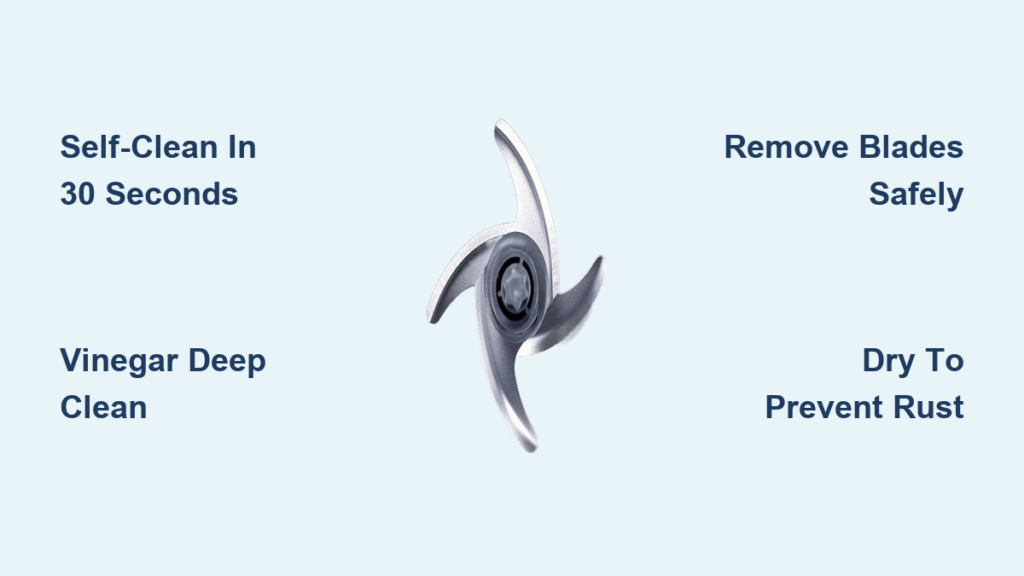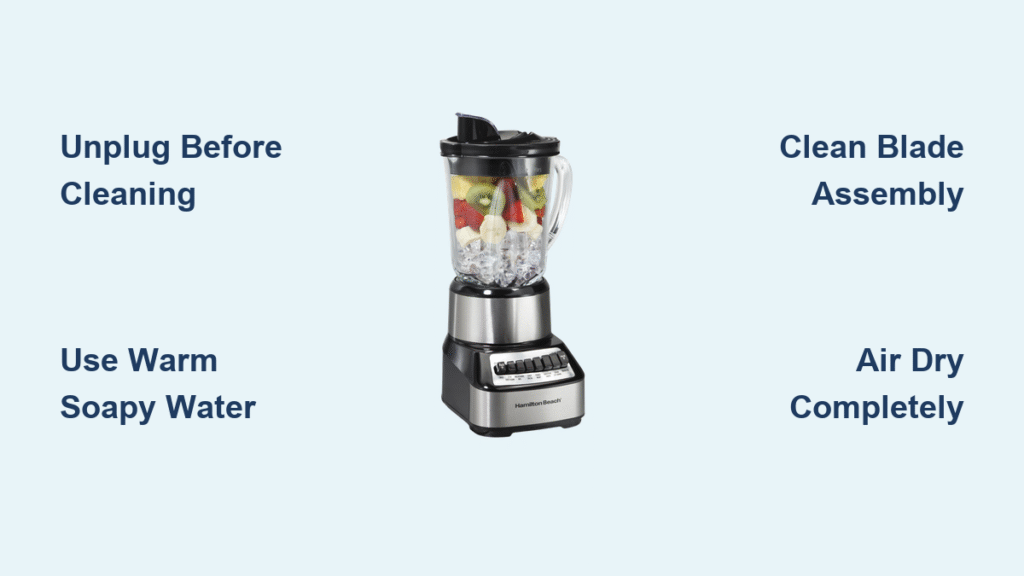Your morning smoothie shouldn’t take three minutes to blend. When ice chunks survive longer than your patience, dull blades are likely the culprit. Instead of replacing your entire blender, sharpening those blades can restore peak performance in under 30 minutes. This guide covers every proven method—from precision manual techniques to quick kitchen hacks using rice or potatoes—to bring your blender back to factory sharpness. You’ll learn exactly how to sharpen blender blades safely and effectively without specialized tools.
Dull blades waste time, strain motors, and ruin recipes. The good news? Most sharpening takes less time than your morning coffee brews. Whether you own a vintage Osterizer from the 70s or a modern Vitamix, these techniques work across brands. Skip the $50 replacement costs—your blades just need a micro-abrasive refresh. Let’s transform your sluggish blender into a kitchen powerhouse.
Blade Dullness Warning Signs
Performance drops gradually, making problems easy to miss. Watch for these red flags:
- Extended blending times for simple recipes
- Motor overheating during normal use
- Visible chunks in supposedly smooth purees
- Increased noise levels as the motor strains
- Inconsistent texture with fibrous strands remaining
These symptoms indicate microscopic edge damage accumulating through routine use, especially when processing frozen ingredients or hard foods. If your blender chokes on frozen berries that used to liquefy instantly, or if it takes two cycles to crush ice, your blades need attention. Ignoring these signs accelerates motor wear—address dullness before it becomes a costly repair.
Why Rice and Ice Accelerate Dullness
Hard ingredients like ice cubes and frozen fruit cause the most aggressive blade degradation. Each impact creates microscopic nicks and rolled edges. Even frequent cleaning contributes—harsh detergents and dishwashers accelerate corrosion. Over time, these tiny imperfections compound, reducing the blade’s ability to shear ingredients efficiently. Pro tip: Limit ice crushing to pulse mode only; continuous blending multiplies the damage.
Manual Silicon Carbide Method

Remove Blade Assembly Safely
Most modern blenders feature lift-out blade cartridges—twist counterclockwise to release. Vintage models from the 1970s with glass pitchers require partial disassembly. Always unplug the blender first and wear cut-resistant gloves during removal. Place a towel in the sink to cushion falls. For stuck assemblies, tap the base gently with a rubber mallet—never use metal tools that could damage threads.
Create Precision Sharpening Tool
Materials needed:
– 600-grit silicon carbide sandpaper (automotive-grade)
– Wooden Popsicle stick or thin wood strip
– Double-sided tape
– Bright directional light
Cut sandpaper slightly narrower than the stick width. Secure firmly with tape, creating a miniature sharpening paddle that provides exceptional control. This setup mimics professional sharpening jigs while costing pennies. Warning: Avoid metal files—they remove too much material and create dangerous edge profiles.
Sharpen Each Blade Edge
Maintain the 15-20 degree factory bevel throughout:
- Anchor the blade assembly on a stable surface
- Draw the sharpening paddle across each edge in single direction
- Apply 3-5 strokes for mild dullness, 10-15 for severe cases
- Check progress under bright light—freshly sharpened steel reflects differently
- Repeat for all blades—most assemblies contain 4-6 individual edges
Pro tip: The 600-grit silicon carbide removes metal efficiently while preserving blade geometry. Avoid emery boards—they’re too coarse and create unsafe edge profiles. After sharpening, rinse thoroughly to remove metal particles before reassembly.
Quick Rice Sharpening Hack
Choose the Right Rice
Long-grain varieties high in amylose content work best:
– Basmati rice
– Carolina Gold
– Any sturdy long-grain white rice
Amylose’s robust molecular structure makes these grains effective micro-abrasives. Avoid short-grain or glutinous rice—they lack the necessary hardness. Keep your rice dry in an airtight container between uses; moisture ruins its abrasive properties. Time saver: This method takes just 45 seconds and requires no blade removal.
Execute 30-Second Protocol
- Measure ½ cup uncooked rice into clean, dry pitcher
- Pulse in 5-second intervals for 30-45 seconds total
- Check blade efficiency with water test
- Repeat 2-3 times if needed
- Discard rice powder and rinse thoroughly
Mechanism: Rice grains remove microscopic metal while cleaning blade surfaces. The process also realigns slightly bent edges through mechanical impact. For best results, follow with a water blend to flush metal particles. Note: This won’t fix severely damaged blades—switch to silicon carbide if rice fails.
Potato-Based Blade Restoration
Cut Firm Potatoes
Use 2-3 unpeeled russet potatoes cut into 1-2 inch chunks. The high starch content provides mild abrasive action while natural enzymes break down organic residues. Never peel potatoes—skins contain the most effective abrasives. Discard any potatoes with soft spots; they won’t deliver consistent results.
Blend for 45 Seconds
Combine potato chunks with 1-2 cups water. Blend on high speed until water turns cloudy—indicating metal particle suspension. Repeat 2-3 times with fresh potato mixture for severely dull blades. Critical step: Stop blending once water clouds to prevent over-processing. Potato starch leaves blades cleaner than rice alone, but requires thorough rinsing to avoid gunk buildup.
Advanced Stone Sharpening
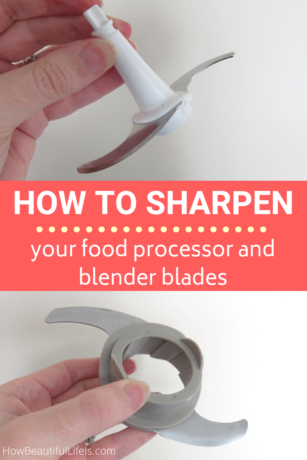
Fine-Grit Ceramic Method
For severely damaged blades, use ceramic or diamond sharpening stones:
- Maintain 15-20 degree angle consistently
- Apply light, steady pressure
- Limit to 5-7 strokes per edge
- Check frequently to prevent over-sharpening
Warning: This advanced technique risks blade imbalance. Only attempt if experienced with sharpening tools. Test balance by spinning the assembly manually after sharpening—any wobble means you’ve removed uneven material. Pro tip: Mark edges with marker before sharpening; the ink wears off fastest on high spots, guiding your strokes.
Safety Protocol Essentials
Personal Protection
- Unplug blender before blade removal
- Wear cut-resistant gloves during handling
- Work on stable, non-slip surface
- Keep fingers clear of blade edges
Blades remain dangerously sharp even when dull. Always handle assemblies by the central hub, never the cutting edges. Place a folded towel under your work area—it catches stray blades and muffles falls. Never attempt sharpening while blades are mounted in the pitcher.
Pre-Sharpening Inspection
- Check for cracks, chips, or bending
- Examine attachment points for wear
- Verify retention mechanism integrity
Replace immediately if structural damage appears or sharpening no longer improves performance. Hairline cracks near the hub indicate metal fatigue—continuing use risks catastrophic failure. If threads are stripped or wobbly, replacement is safer than sharpening.
Performance Testing After Sharpening
Immediate Validation
- Blend 1 cup water—observe strong vortex formation
- Process soft fruit for texture consistency check
- Listen for unusual vibrations indicating imbalance
A properly sharpened blade creates a deep vortex that pulls ingredients downward. Blend a banana for 15 seconds—it should achieve restaurant-smooth texture. Any grinding noises or uneven blending means recheck your sharpening angles.
Long-term Monitoring
Track blending times for standard recipes. Optimal sharpening reduces blending time by 15-25% for typical smoothie preparations. Note how quickly ice crushes: sharp blades turn cubes to snow in under 10 seconds. If performance degrades faster than before, you’ve over-sharpened or damaged the geometry.
Blade Maintenance Strategies
Extend Sharpness Duration
Operational habits that preserve edges:
– Use pulse function for frozen ingredients
– Avoid overloading beyond manufacturer specs
– Allow motor cooling between heavy cycles
– Select appropriate speeds for ingredient types
Start blending on low speed before ramping up. Never add ice to a stationary blender—always have liquid moving first. For nut butters, pause every 20 seconds to scrape sides rather than running continuously.
Proper Cleaning Protocol
- Rinse immediately after use
- Skip harsh detergents that promote corrosion
- Dry thoroughly before storage
- Inspect periodically for rust or pitting
Fill the pitcher halfway with warm water and one drop of dish soap, then pulse for 30 seconds. Hand-wash the blade assembly with a soft brush—never dishwasher it. Critical: Always dry the gasket seal completely to prevent mold.
Storage Best Practices
- Loosen blade assembly slightly to prevent stress
- Store in dry environment
- Avoid stacking heavy items on pitcher
Leave the blade hub finger-tight when storing. Moisture is the enemy—place silica gel packets in your storage cabinet. Never store blades loose in drawers where they can nick other utensils.
Troubleshooting Poor Results
Insufficient Sharpening
Symptoms: No performance improvement after rice/potato method
Solution: Switch to manual silicon carbide method or consider blade replacement. Rice only addresses surface dullness; severe damage requires metal removal.
Blade Imbalance
Symptoms: Excessive vibration, uneven blending
Solution: Recheck assembly seating, verify no over-sharpening occurred. Disassemble and reseat the blade—sometimes debris prevents proper alignment. If vibration persists, replace the assembly.
Continued Poor Performance
Potential causes: Motor wear, bearing deterioration, or blade assembly beyond economical sharpening threshold. If sharpening yields no improvement after three attempts, inspect the motor coupling. Worn rubber drive cups mimic dull blade symptoms—replace for under $10.
Sharp blender blades transform kitchen efficiency. Whether you choose the precision of silicon carbide sharpening or the convenience of rice-based restoration, these methods restore factory performance without replacement costs. Test your newly sharpened blades with your favorite smoothie recipe—you’ll notice the difference immediately. Implement the maintenance strategies to double your blade lifespan, saving both money and kitchen frustration. Your blender’s second wind starts today.

